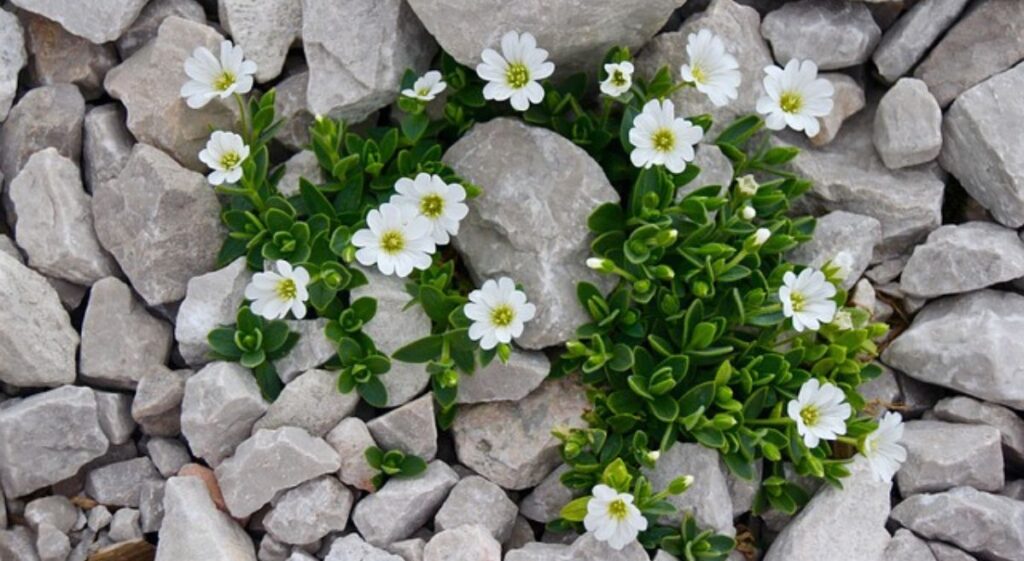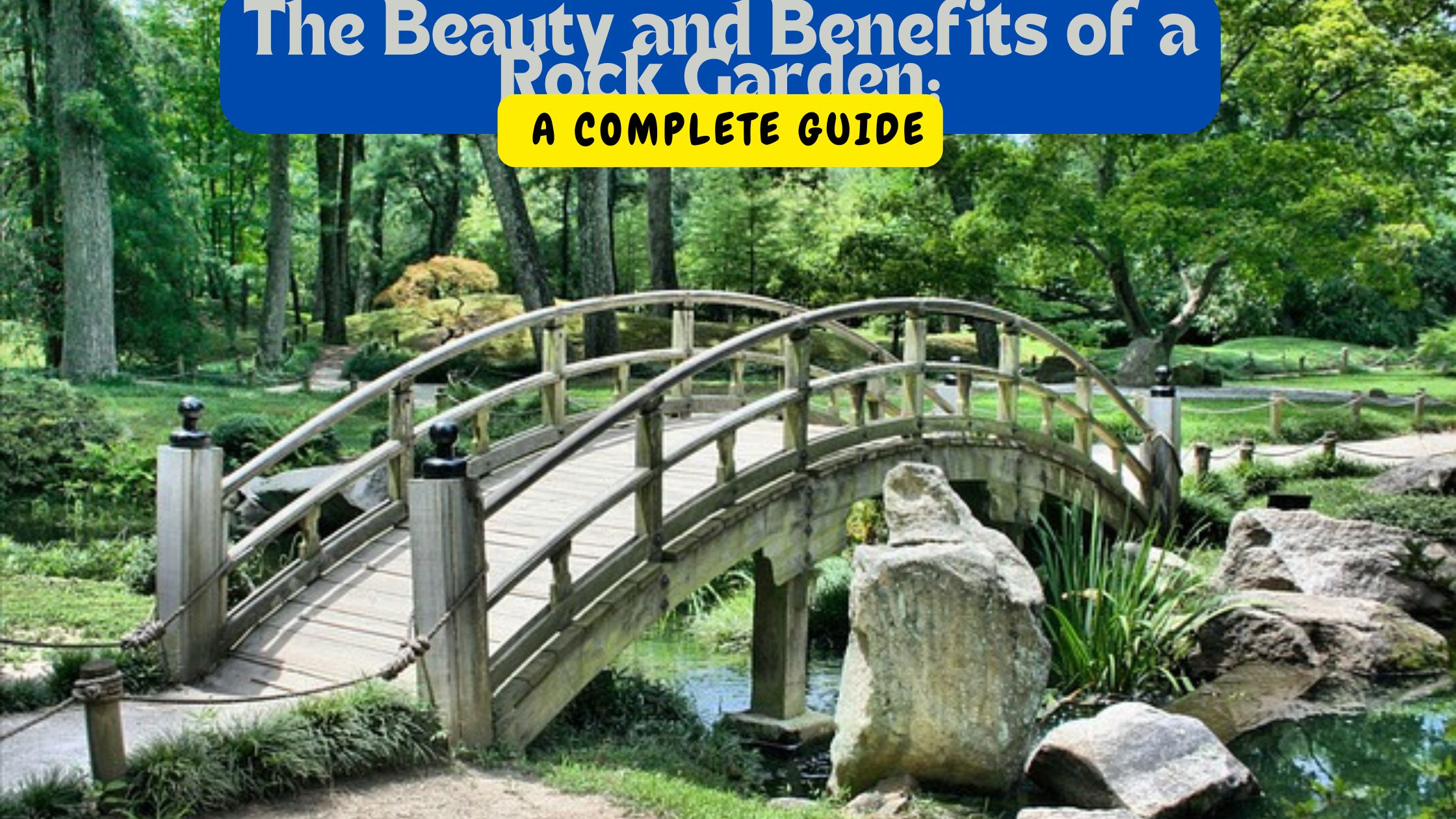Introduction
The Beauty and Benefits of a Rock Garden: A Complete Guide

Embrace the allure of rock gardens – not only visually captivating but also sustainable and low-maintenance. Whether you’re a seasoned horticulturalist or a newcomer seeking an effortless way to enhance your outdoor haven, a rock garden might just be the perfect solution. Immerse yourself in this guide as we explore the myriad benefits, design inspirations, and practical maintenance strategies for creating a breathtaking rock garden that will leave you enchanted.
Benefits of a Rock Garden
Rock gardens are a popular choice among gardeners due to their numerous advantages.
Low Maintenance:
- Drought-tolerant plants minimize the need for frequent watering.
- Rocks and gravel suppress weed growth, reducing maintenance.
Water Conservation:
- Plants thrive in dry conditions, suitable for areas with water restrictions.
- Targeted watering methods enhance irrigation efficiency.
Aesthetic Appeal:
- The combination of rocks, gravel, and plants creates a visually striking landscape.
- Year-round beauty with varied textures, colors, and forms of plants.
Environmental Benefits:
- Provide habitat for beneficial insects, birds, and small animals.
- Rocks and plants help stabilize soil and prevent erosion on slopes.
Space Efficiency:
- Designed to fit into small areas, making them ideal for urban environments.
- Vertical elements like rock walls maximize space usage.
Versatility:
- Customizable to suit various styles, from naturalistic to formal.
- Integrated into different garden settings, such as borders, slopes, or standalone features.
Sustainability:
- Local rocks and native plants reduce the need for imported materials and support local ecosystems.
- Require fewer chemical inputs like fertilizers and pesticides.
Educational Opportunities:
- Provide an opportunity to learn about diverse plant species and their care.
- Showcase different plant types, including succulents, alpines, and perennials.
Stress Reduction:
- The tranquil setting of rock gardens offers a calming retreat.
- Working in a rock garden can be a therapeutic activity.
Increased Property Value:
- An attractive rock garden enhances the property’s curb appeal.
- Well-designed rock gardens can serve as a unique selling point.
Incorporating a rock garden into your landscape not only enhances its aesthetic value but also provides practical and environmental benefits, making it a rewarding addition to any outdoor space.
How to design a rock garden?
Creating a Beautiful and Sustainable Rock Garden: A Step-by-Step Guide

Designing a rock garden requires careful planning and attention to detail. Here’s a reorganized and improved guide to help you create a stunning and eco-friendly rock garden:
Step 1: Planning and Preparation
- Choose the Location:
- Select a sunny spot with good drainage to ensure optimal conditions for most rock garden plants.
- Avoid areas where water tends to accumulate.
- Sketch Your Design:
- Create a rough layout of your garden, including the placement of large rocks, pathways, and planting beds.
- Consider the size of the area and scale your design accordingly.
Step 2: Selecting Rocks and Stones
- Variety and Size:
- Use large rocks as structural elements and focal points.
- Fill in with medium and small stones for texture and interest.
- Local Stones:
- Choose stones that are native to your region for a more natural appearance.
Step 3: Soil Preparation
- Test and Amend Soil:
- Ensure the soil is well-draining. Amend with sand, gravel, or small stones if necessary.
- Add compost or organic matter to enrich the soil.
- Create Elevations:
- Create slight elevations to mimic natural landscapes and improve drainage.
Step 4: Arranging Rocks
- Foundation Rocks:
- Start with the largest rocks, placing them as focal points.
- Ensure they are stable and partially buried for a natural look.
- Fill in Gaps:
- Place medium and small stones around the larger ones, filling in gaps and creating planting pockets.
Step 5: Choosing Plants
- Drought-Tolerant Plants:
- Choose succulents like sedum and sempervivum, as they thrive in rock gardens.
- Select hardy perennials that are suited to your climate.
- Ground Covers:
- Add creeping thyme for fragrance and texture.
- Use phlox to provide color and cover the ground effectively.
Step 6: Planting
- Plant Arrangement:
- Give plants enough space to grow and spread.
- Plant taller plants at the back or center and shorter ones at the front or edges.
- Watering:
- Water thoroughly after planting to help plants establish roots.
- Water deeply but infrequently, allowing the soil to dry out between waterings.
Step 7: Mulching and Finishing Touches
- Mulch with Stones:
- Use gravel or small stones as mulch to retain moisture and suppress weeds.
- Mulching also enhances the overall look of the garden.
- Decorative Elements:
- Add decorative elements like driftwood, statues, or birdbaths to personalize your garden.
Maintenance Tips
- Weeding:
- Regularly remove weeds to keep your garden neat and healthy.
- Pruning:
- Trim back overgrown plants to maintain shape and health.
- Seasonal Care:
- In colder climates, protect plants during winter with burlap or move sensitive plants to sheltered areas.
Creating a rock garden is a rewarding and creative endeavor. By following these steps, you can create a visually stunning and eco-friendly rock garden that enhances the beauty and tranquility of your outdoor space.
For more inspiration and tips, visit our blog and join our community of fellow rock garden enthusiasts.
What are the best plants for a rock garden?

When designing a visually arresting and low-maintenance rock garden, selecting the appropriate plants is crucial. Some of the top choices for a rock garden include:
1. Sedum (Stonecrop):
- Description: Succulent plants with diverse shapes and sizes.
- Benefits: Low maintenance, drought-tolerant, year-round interest.
2. Sempervivum (Hens and Chicks):
- Description: Rosette-forming succulents with varying colors and textures.
- Benefits: Extremely hardy, drought-tolerant, easy propagation.
3. Thymus (Thyme):
- Description: Aromatic, low-growing herb with tiny flowers.
- Benefits: Drought-tolerant, attracts pollinators, culinary uses.
4. Phlox subulata (Creeping Phlox):
- Description: Low-growing perennial with vibrant spring blooms.
- Benefits: Forms a dense mat, erosion control, attracts butterflies.
5. Aurinia saxatilis (Basket-of-Gold):
- Description: Perennial with bright yellow flowers in spring.
- Benefits: Drought-tolerant, color burst, thrives in poor soil.
6. Armeria maritima (Sea Thrift):
- Description: Clump-forming perennial with pink, white, or red pom-pom flowers.
- Benefits: Tolerates salty and poor soil, attracts pollinators.
7. Euphorbia myrsinites (Myrtle Spurge):
- Description: Succulent-like perennial with bluish-green foliage.
- Benefits: Drought-tolerant, unique texture, deer-resistant.
8. Iberis sempervirens (Evergreen Candytuft):
- Description: Low-growing perennial with white flowers in spring.
- Benefits: Evergreen foliage, attracts pollinators, tolerates poor soil.
9. Lavandula (Lavender):
- Description: Woody perennial with fragrant purple flowers.
- Benefits: Drought-tolerant, attracts pollinators, culinary and craft uses.
10. Dianthus (Pinks):
- Description: Low-growing perennial with fringed, fragrant flowers.
- Benefits: Long blooming period, attracts pollinators, drought-tolerant.
To create a successful rock garden, follow these tips:
- Soil: Ensure good drainage by amending soil with sand or gravel.
- Placement: Group plants with similar water and sunlight needs together.
- Rocks: Use various rock sizes and types for a natural look.
- Maintenance: Regularly remove weeds and occasionally water during dry periods.
These plants are not only aesthetically pleasing but also well-adapted to the challenging conditions of a rock garden.
Conclusion
Engaging in the creation of a rock garden presents a gratifying endeavor, bestowing various advantages ranging from minimal upkeep to intrinsic aesthetics. Through meticulous design and appropriate care, your rock garden shall evolve into a captivating focal point within your landscape, offering enduring delight for years to come. Embrace the inherent simplicity and elegance of a rock garden, and witness the remarkable transformation of your outdoor space.
For further gardening insights and inspiration, explore our blog and become a part of a thriving community of garden enthusiasts.
References
- “The Spruce: A Guide to Building a Rock Garden”
- “Better Homes & Gardens: Essential Tips for Designing a Rock Garden”
- “Gardeners’ World: Uncovering the Best Plants for Rock Gardens”
